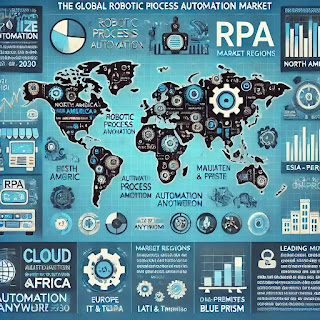IBM Business and Investment Report: 2025
Introduction
IBM (International Business Machines Corporation) is a global technology leader with a storied history in computing and innovation. Founded in 1911, the company has consistently evolved to remain at the forefront of technological advancement. IBM’s current focus areas include quantum computing, artificial intelligence (AI), cloud computing, and hybrid IT solutions, positioning it as a key player in shaping the future of technology.
Key Business Lines
Quantum Computing:
IBM Quantum offers access to the world’s largest fleet of quantum computers through IBM Cloud. The company has made significant advancements, such as its recent 433-qubit quantum processor, and aims to launch a 1000+ qubit system by 2025.
Partnerships: Collaborations with universities, governments, and enterprises, including ExxonMobil, JPMorgan Chase, and Daimler, to explore quantum applications in energy, finance, and materials science.
Artificial Intelligence (AI):
IBM Watson remains a leader in enterprise AI, offering solutions in healthcare, financial services, and customer engagement.
Recent innovations include Watsonx, a platform tailored for training, deploying, and managing AI models, designed to accelerate AI adoption across industries.
Hybrid Cloud:
IBM Cloud, combined with Red Hat OpenShift, drives its hybrid cloud strategy. This business line enables enterprises to manage workloads seamlessly across public and private clouds.
Partnerships: Collaborations with SAP, Salesforce, and Oracle to enhance cloud offerings and enterprise integrations.
Blockchain:
IBM Blockchain provides enterprise-grade blockchain solutions, focusing on supply chain, food safety, and financial transactions.
Mainframe Systems:
IBM Z remains critical for banking, government, and large-scale enterprises requiring secure, high-performance computing.
Financial Overview
2024 Revenues: $62 billion (estimated growth of 5% YoY driven by cloud and AI solutions).
Profitability:
Operating Margin: 15%.
EPS (Earnings Per Share): $8.90 (2024).
Debt and Liquidity:
Total Debt: $45 billion.
Cash Reserves: $9 billion.
Dividend:
Current yield: 5.1%, reflecting IBM’s long-standing commitment to shareholder returns.
Major Clients and Customers
Industries Served:
Financial Services: JPMorgan Chase, Citibank.
Healthcare: Mayo Clinic, CVS Health.
Retail: Walmart, Kroger.
Government: Partnerships with the US Department of Energy and several global governments for AI and quantum projects.
Key Customers:
ExxonMobil (quantum computing applications in energy).
Siemens (industrial AI solutions).
Delta Air Lines (cloud and operational analytics).
Ownership and Fund Interest
Institutional Ownership: Approximately 58% of shares held by institutions.
Top Investors:
Vanguard Group: 8%.
BlackRock: 7%.
State Street: 5%.
Mutual Fund Interest:
Strong presence in technology-focused ETFs and dividend income funds.
Partnerships and Collaborations
Research Collaborations:
MIT-IBM Watson AI Lab focuses on advancing AI technologies.
Joint quantum computing research with the University of Chicago and Oak Ridge National Laboratory.
Enterprise Partnerships:
Salesforce: AI-driven customer engagement tools.
SAP: Cloud and AI integrations.
Palantir: AI-enabled data analytics.
FutureTech Innovations Impacting Growth
Quantum Computing:
Expected commercialization of quantum computing applications by 2025 in cryptography, drug discovery, and optimization problems.
Increased revenue from quantum computing services projected to grow by 40% annually.
AI and Generative Models:
Watsonx positioned to dominate enterprise AI platforms, leveraging IBM’s industry-specific expertise.
Growth in AI-driven healthcare diagnostics and financial fraud detection tools.
Carbon Nanotube Transistors:
IBM leads research in carbon nanotube-based transistors, aiming for post-silicon semiconductor breakthroughs by 2026. (25,000 times thinner than a human hair)
Potential applications include ultra-thin GPUs and high-efficiency processors.
Sustainability and Green IT:
IBM’s commitment to sustainability includes energy-efficient data centers and green IT solutions.
Partnerships with renewable energy providers to achieve carbon neutrality by 2030.
Growth Prospects for 2025
Revenue Growth: Projected CAGR of 6-7%, driven by hybrid cloud, AI, and quantum computing.
Market Leadership:
Strengthening its position as a leader in enterprise AI and cloud solutions.
Quantum computing likely to contribute significantly to revenues as enterprise adoption increases.
IBM now generates revenue from deploying quantum systems and services to more than 250 customers.
Risks:
Competition from AWS, Microsoft Azure, and Google Cloud in the cloud computing space.
High R&D costs associated with emerging technologies.
Conclusion
IBM remains a compelling investment opportunity, leveraging its leadership in AI, quantum computing, and hybrid cloud solutions. Its focus on next-generation technologies such as carbon nanotubes and its commitment to sustainability position the company for long-term growth. With strong institutional backing, a diversified client base, and robust financial health, IBM is well-poised to capitalize on technological advancements in 2025 and beyond.
Related Articles:















